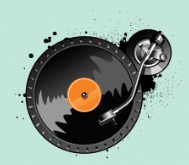The Beat from the Street
Hip hop is a culture born on the streets of New York from the ashes of disco and the development of funk. During the early 70s many funk groups began playing disco because, at the time, it was the latest trend. Drawing from disco production techniques, funk music started to become technology driven as it absorbed more electronic sounds from synthesizers and drum machines. However, New York’s financial downturn during the mid 70s to early 80s was about to send music in a whole new direction. During this era, New York City was embroiled in a fiscal crisis, and the city’s economy was falling apart due to the decline of the manufacturing industry. Discos and night clubs closed their doors because there wasn’t enough money to pay for the entertainment. As a result, urban youth brought the party to the streets with mobile audio equipment called sounds systems, which were introduced by Jamaican culture. The MC: To hype the crowd at these block parties, DJs were accompanied by a Master of Ceremonies, also known as an MC or 'emcee'. An MC would present the DJs, entertain the crowd, speak or rhyme to the audience, and provide spoken vocals over the music. By the late 70s, record labels such as Sugar Hill started to cash in on the growing DJ and MC trend. Some of the first rap music records were recorded by live disco bands and an MC rapping over the music. Golden Age of Hip Hop: By the late, 80s, hip hop had spread across the country. Record labels recognised the genre as an emerging trend and started to invest a lot of money into the movement. New scenes and different styles emerged from city to city as the culture popularised. This new era was labeled as the “Golden Age” of hip hop and lasted throughout the, 80s and into the early 90s. During this time period, hip- hop was largely experimental and was characterised by its sound, diversity , innovation, attitude, and influences from different regions. Sampling and Copyright: In the early 90s, sampling was being heavy used in rap music. The original copyright owners of the music being sampled were hearing parts of their songs used in new rap music and realised they were not getting paid for it. As a result, rap music began to take a whole new direction and producers had to start making their own sounds rather than relying heavily on samples. After the explosion of diversity during the mid 80s and 90s, hip hop music became more commercial and was the top-selling music genre by the late 90s. The popularity of hip hop music continued through the 2000s and eventually found its way into mainstream pop and electronic music. Today, hip hop is globally recognised and continues to influence music, styles, and culture around the world. (Reading text adapted from dubspot)

